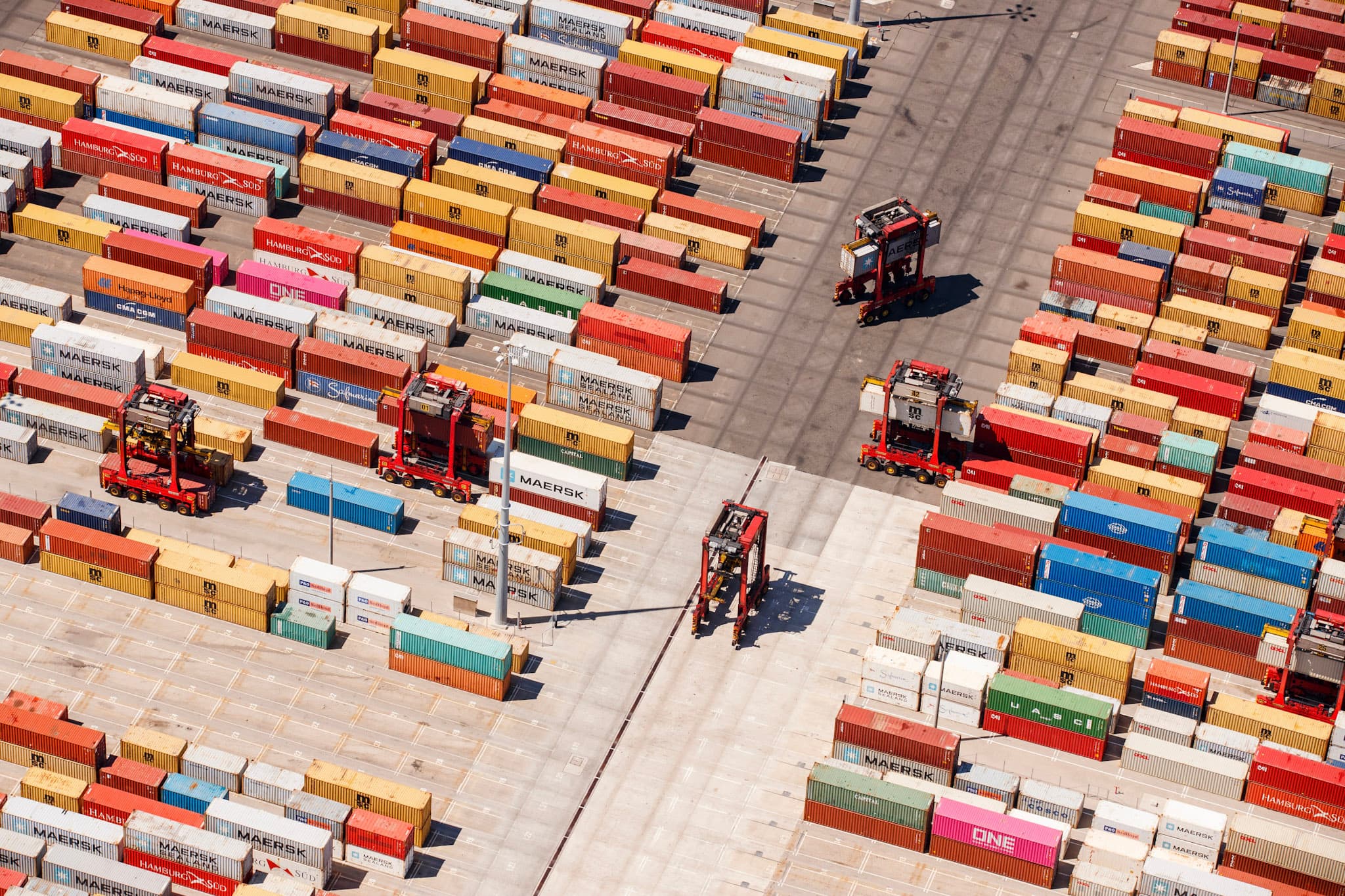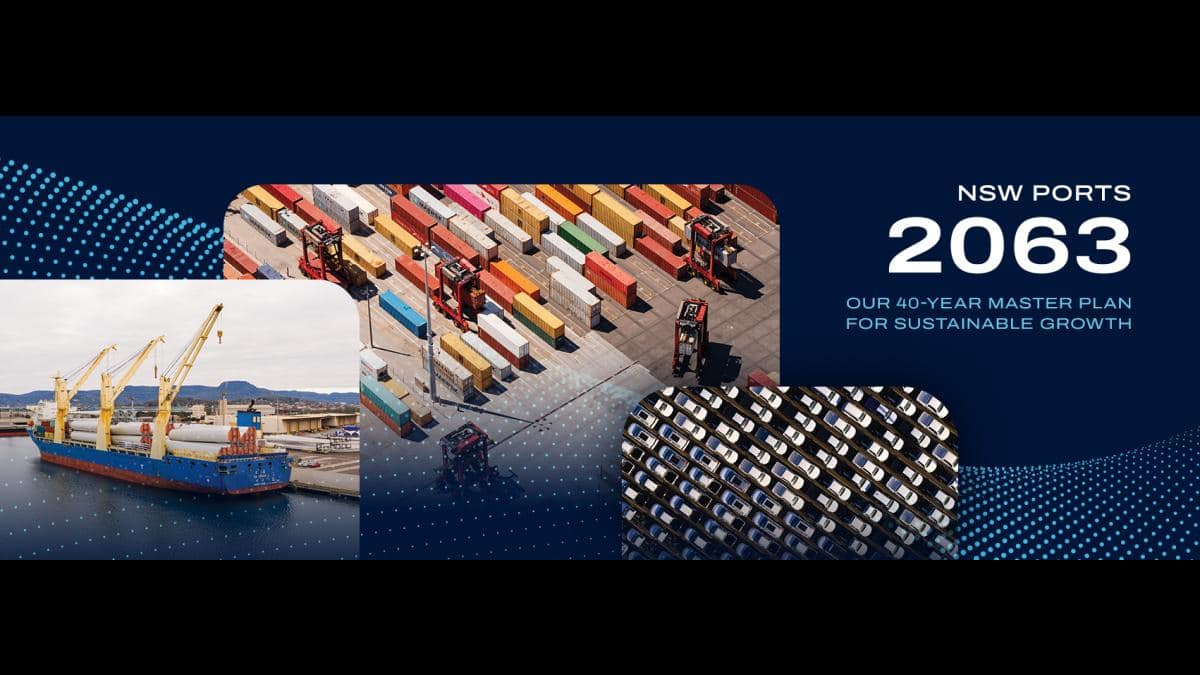NSW Ports has marked its 10th anniversary with the release of a 40-year Master Plan to meet the State’s future import and export needs.
NSW Ports 2063: Our 40-year Master Plan for Sustainable Growth forecasts that population growth could result in triple the current container trade at Port Botany and double the volume of motor vehicles and machinery through Port Kembla.
Construction materials will also increase significantly over the next four decades to match housing and infrastructure demand, while the shift to renewable energy will drive project cargo trade, such as onshore and offshore wind farm components.

Image Caption: Wind blades being managed at Port Kembla for delivery to regional NSW.
NSW Ports 2063 outlines objectives to sustainably cater for such growth, including the efficient use of existing port land, moving more freight by rail, protecting freight-related land and infrastructure from land use conflicts and growing freight handling capacity.
NSW Ports CEO Marika Calfas said the company had charted a course to cater for NSW’s future trade needs.
“Our 40-year Master Plan outlines priorities and actions required to cater for the trade growth and diversification needs of the people and businesses of NSW,” she said.
“Achieving the actions in our Master Plan will enhance our ports and port supply chains, minimise community impacts, support the competitiveness of exports and support the cost-effective supply of goods for consumers and businesses.”
The release of NSW Ports 2063 comes as the company celebrates its first decade of managing Port Botany and Port Kembla, alongside intermodal facilities at Enfield and Cooks River.

Image Caption: The movement of containers at Port Botany - NSW's premier port that manages almost all of the State's container trade.
“Over the past 10 years, NSW Ports and its port operators have invested some $2.5 billion to meet the State’s growing trade needs and improve productivity,” Ms Calfas said.
“As NSW’s trade needs have grown, so too has our ambition to be a world-class port and logistics manager, driving sustainable growth. Already, we are investing in a brighter future, including expansion of port on-dock rail capacity and empty container storage capacity at Port Botany and plans for a future offshore wind port facility at Port Kembla."
“We look forward to continuing to work with government, business and the community to deliver sustainable, efficient and productive port supply chains that meet NSW’s needs into the future.”
Click here to read NSW Ports 2063: Our 40-year Master Plan for Sustainable Growth.
NSW Ports manages the key trade gateways of Port Botany and Port Kembla and intermodal facilities at Enfield and Cooks River that contribute $13.6 billion annually to NSW Gross State Product and support about 65,000 jobs.
For media inquiries, contact:
Peter.Munro@nswports.com.au | 0420 440 654

